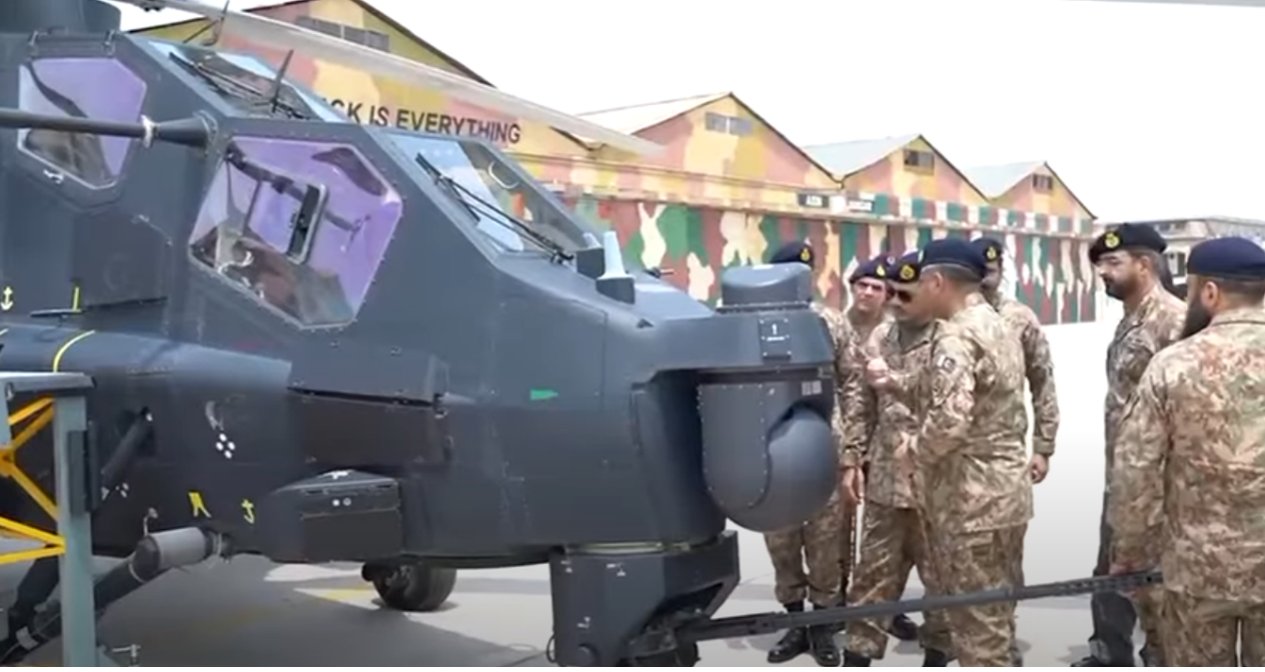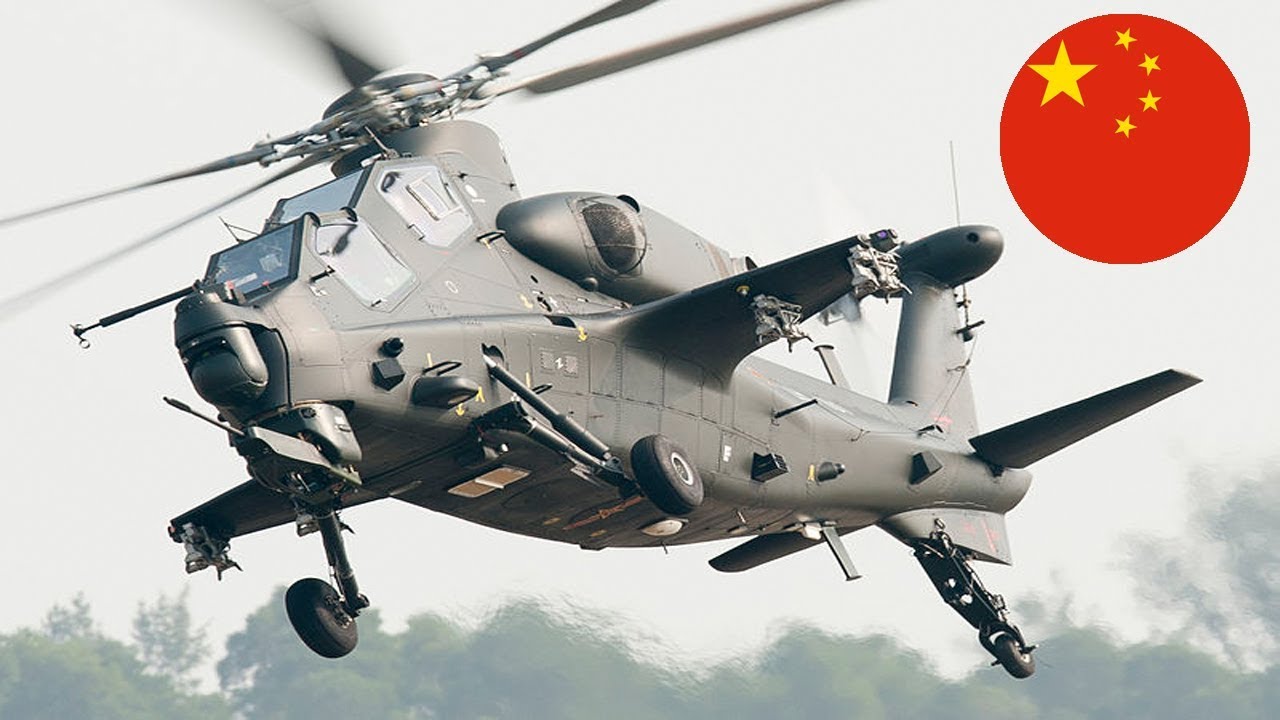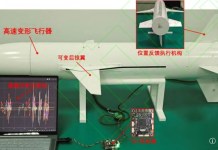On August 2, 2025, the Pakistan Army inducted the Chinese-manufactured Z-10ME attack helicopter into its aviation wing. The induction ceremony was held at Multan Garrison and presided over by Chief of Army Staff Field Marshal Asim Munir.
During the induction ceremony, a firepower demonstration at the Muzaffargarh Field Firing Ranges showcased the Z-10ME’s operational prowess.
The helicopter executed precision strikes, demonstrating its ability to engage targets with accuracy and lethality. This event not only marks the first known export of the Z-10ME but also highlights Pakistan’s growing military-industrial ties with China.
Designed for high-altitude operations, precision strike missions, and enhanced survivability in contested environments, the Z-10ME is poised to become the cornerstone of Pakistan’s attack helicopter fleet, supplanting the ageing American-supplied AH-1F Cobra helicopters.
The induction of the Z-10me signifies a significant realignment in Pakistan’s defence procurement strategy, especially in light of the stalled agreements with Western suppliers.
The Z-10ME
The Z-10ME, an export-oriented variant of China’s Z-10 attack helicopter, is designed to deliver precision strikes in both day and night conditions, making it a versatile asset for modern battlefields.
It is often referred to as China’s answer to the American AH-64 Apache and the Russian Mi-28 Havoc.
Developed by the Changhe Aircraft Industries Corporation (CAIC), the Z-10ME is equipped with cutting-edge technology tailored to meet the demands of complex combat environments.
Pakistan’s variant comes equipped with twin uprated WZ-9G turboshaft engines, providing approximately 1,500 horsepower each, designed to deliver reliable performance in high-altitude, hot-and-dusty operational theaters, a crucial requirement given Pakistan’s mountainous terrain in areas like Khyber Pakhtunkhwa and Balochistan.
The service ceiling exceeding 6,000 meters enables operations in regions where older platforms, such as the AH-1F, struggled with payload and manoeuvrability.
The Z-10ME is engineered with an emphasis on all-weather, day-night precision strike capabilities, integrating advanced sensor suites that include millimeter-wave (MMW) radar, electro-optical targeting systems (EOTS), and helmet-mounted displays (HMD) for pilots.
Its six external hardpoints allow it to carry a versatile range of munitions, including AKD-10 anti-tank guided missiles (ATGMs), CM-502AG air-to-ground missiles, TY-90 air-to-air missiles, and precision-guided rockets.
Additionally, the Z-10ME is compatible with CM-501XA loitering munitions and SW-6 launchable UAVs, offering Pakistan a multi-domain strike capability.
One of the helicopter’s standout survivability features is its infrared-suppressed exhaust system, designed to reduce heat signatures against MANPADS threats.
Its sand-filtered engine intakes, composite armour plating, self-defence electronic warfare (EW) suite, and laser warning receivers further enhance its ability to survive in modern contested environments.

Analytical Perspective
Failed Acquisition Efforts: China To The Rescue
The induction of the Z-10ME coincides with Pakistan’s ongoing efforts to modernise its battlefield aviation assets, particularly following obstacles encountered in acquiring Western attack helicopters.
Pakistan’s ageing fleet of Bell AH-1F Cobras, initially inducted in the 1980s, has become increasingly obsolete in the face of advanced air defence systems and technologically sophisticated enemy armour.
An earlier attempt to procure the Turkish T-129 ATAK helicopters was unsuccessful after the United States withheld export licenses for the CTS800 engines, thereby effectively terminating the deal.
Similarly, Pakistan’s persistent requests to acquire additional AH-1Z Viper helicopters from the United States have been impeded due to diplomatic tensions and export restrictions. In this context, China has emerged as a reliable defence partner, offering a capable and adaptable solution through the Z-10ME platform.
For Pakistan, this development not only addresses a critical operational deficiency but also aligns with its broader strategic objectives of reducing dependence on Western suppliers, diversifying its defence arsenal, and strengthening defence-industrial collaboration with Beijing.
Pakistan-China Military Cooperation
The induction of the Z-10me signifies a milestone in Pakistan-China military collaboration, which has witnessed substantial growth in recent years. China has become Pakistan’s principal arms supplier, offering a diverse array of platforms, ranging from main battle tanks to naval vessels.
The agreement concerning the Z-10ME fortifies this partnership, illustrating China’s confidence in Pakistan as a strategic ally and as a significant market for its defence exports. This collaboration transcends mere equipment procurement.
The two nations have engaged in joint military exercises, technology transfers, and co-production agreements, thereby fostering interoperability and enhancing technical expertise.
The China-Pakistan Economic Corridor (CPEC), a flagship initiative within China’s Belt and Road Initiative, has further solidified bilateral ties, with security cooperation playing an essential role in protecting CPEC infrastructure.
The deployment of the Z-10me could augment Pakistan’s capacity to safeguard these economic assets, particularly in volatile regions such as Balochistan.

Fleet Size & Deployment Plans
While the exact number of helicopters in the initial batch remains undisclosed, defence analysts estimate that Pakistan has received an initial tranche of 4–8 units, with a long-term objective of inducting around 50–60 helicopters.
These helicopters are expected to be deployed across strategically vital sectors, including the Eastern front facing India, counter-terrorism operations in the North-West, and rapid deployment roles in the South.
Operational deployment is also expected to focus on integration with Pakistan’s Network-Centric Warfare (NCW) infrastructure, enabling seamless coordination with ground forces, surveillance drones, and air defence units.
Capability Enhancement
From a tactical standpoint, the Z-10ME significantly enhances Pakistan’s capability to conduct close air support (CAS), anti-armour missions, and precision strikes against high-value targets in complex terrains.
The helicopter’s ability to integrate unmanned systems, loitering munitions, and advanced networked sensors offers the Pakistan Army a level of operational flexibility that its legacy platforms could not provide. With the Z-10ME in its arsenal, the Pakistan Army Aviation Corps can now:-
- Deliver precise anti-armour strikes against adversary mechanised forces, particularly relevant in the context of India’s armoured strength along the eastern border.
- Provide sustained air support and rapid troop deployment in insurgency-prone areas, enhancing the ability to counter hostile movements swiftly.
- Conduct modern reconnaissance and battlefield management missions, thanks to digital communications, long-range optics, and robust sensor suites.
- Project airpower into rugged mountainous terrains, where older helicopters struggled to operate at full effectiveness.
Challenges
While the Z-10ME signifies a significant advancement for Pakistan’s army aviation, its integration into the force encounters several challenges.
Training pilots and maintenance personnel to operate and maintain this new platform will necessitate substantial investments of time and resources. The Pakistan Army must establish a comprehensive logistics and support infrastructure to guarantee the helicopter’s operational readiness.
Furthermore, ensuring interoperability with existing systems and fostering coordination with other branches of the armed forces will be essential to maximising the Z-10ME’s operational effectiveness.
Future Prospects
Looking ahead, the induction of the Z-10ME paves the way for enhanced collaboration with China, potentially involving technology transfers and joint development of future platforms. As Pakistan advances its military modernisation efforts, the Z-10ME is expected to play a pivotal role in shaping its army aviation strategy.
Its success will depend on Pakistan’s capacity to capitalise on the helicopter’s capabilities while effectively addressing logistical and operational challenges.
Regional Implications
The deployment of the Z-10ME helicopter holds considerable significance for regional security dynamics, particularly within the context of Pakistan’s rivalry with India.
The modernisation of the Indian military, exemplified by its procurement of Apache AH-64E attack helicopters from the United States, has incentivised Pakistan to pursue comparable capabilities.
While the Z-10ME may not fully match the advanced systems of the Apache in every aspect, it offers a cost-effective alternative with comparable firepower and operational versatility.
This acquisition underscores Pakistan’s intention to preserve a credible deterrent against potential adversaries. Furthermore, the deployment of the Z-10ME could alter the power balance in South Asia, particularly in the realms of counterinsurgency and border operations.
Its capacity to execute precision strikes against terrorist hideouts and to support ground forces in remote regions enhances Pakistan’s operational scope.
Nevertheless, this development also raises concerns regarding an arms race in the region, as neighbouring states may respond by accelerating their military modernisation initiatives.
Conclusion
The induction of the Z-10ME attack helicopter into the Pakistan Army signifies a significant advancement in its military modernisation and strategic alliance with China.
With its cutting-edge technology, precision strike capabilities, and reliable all-weather performance, the Z-10ME augments Pakistan’s capacity to confront a broad spectrum of security concerns, ranging from counterterrorism initiatives to conventional combat.
As an emblem of Pakistan-China collaboration, the helicopter highlights the strengthening defence relations between the two nations.
Although challenges persist, the integration of the Z-10ME into the Pakistan Army Aviation Corps positions it as a vital asset in safeguarding the nation’s security and sovereignty amid an increasingly complex regional landscape.
- Air Marshal Anil Khosla is a former Vice Chief of Air Staff (VCAS) of the Indian Air Force and AOC in C of Eastern Air Command.
- He tweets at: @AnilKhosla16




